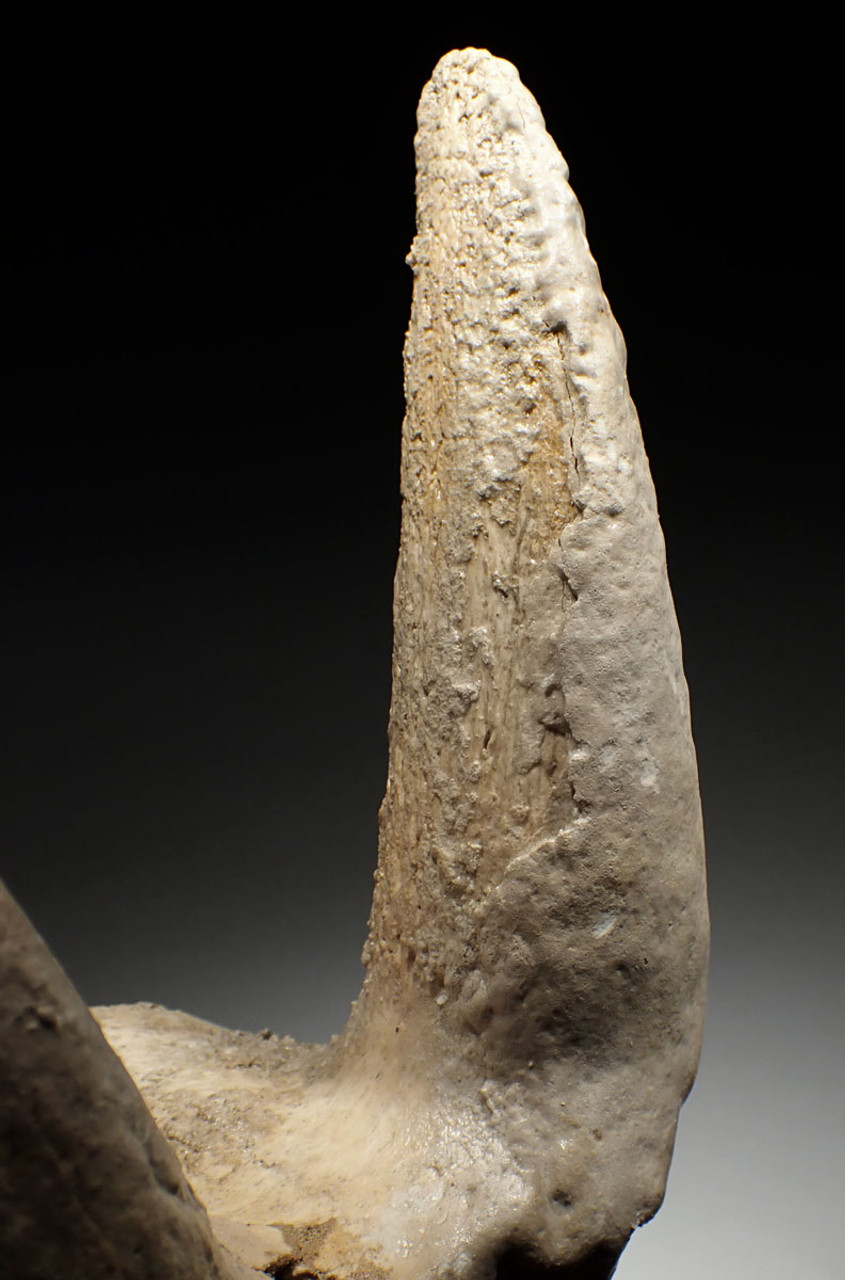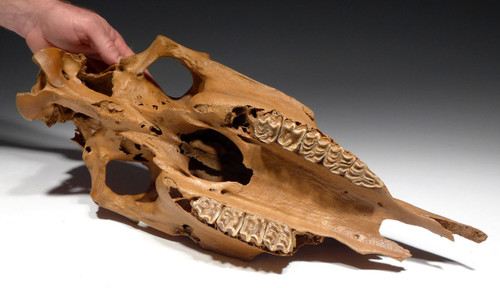Product Description
In over three decades, we have had a few small fragments of Ice Age European fossils of the Ibex but this is only the second time we have seen a Pleistocene fossil Ibex skull with horn cores. This amazing rarity is the complete dorsal portion of the cranium with BOTH horn core. What is truly impressive is the breath-taking heavy layer of cave calcite and cave pearl encrustations that built up over thousands of years in the cave. It looks like the surface has been covered in melted vanilla ice cream! Like most cave fossil deposits, the bone still retains a white to light cream hue, with the calcite layers being ivory white.
This extremely rare specimen has been in our private collection for 20 years! It came from a former private German collection before we acquired it. For the discriminating collector who is bored with the typical fossil show commercial junk, this is a specimen that will be a prized "grail" addition to any collection.
HISTORY
The Capra ibex is a wild mountain goat that thrived during the Ice Age in Europe. It is one of the most famous animals depicted on numerous cave drawings and paintings. No doubt, with its exotic and impressive horn display and unmatched skill in climbing rocky terrain, it was a revered and respected beast by prehistoric humans. This animal possessed very large curved horns with pronounced ridges running across the full length of these horns. They were stout beasts with short legs and hoofed feet that were especially designed for irregular terrain. These creatures are alive today in limited regions and are called the Alpine Ibex. They thrive in the most extreme and hazardous environments, consisting of arctic-like temperatures and seemingly impossible to navigate rocky mountain faces. Even today, very little is known about these animals because their habitat is practically unreachable by scientists for study. Aside from their magnificent horns, their hooves are uniquely designed to maintain a sure footing on rock.
Capra ibex live in herds from 7 to 30 individuals with some males living alone. They are diurnal animals meaning they are active during the day, with their most active periods being early morning and late afternoon. Their height at the shoulders range from 2.3 to 3.1 feet. Body weights range from 88 to 264 pounds. Horn lengths have been measured up to 40 inches. Life spans run from 10 to 14 years.
The Capra ibex has an uncanny ability to negotiate the most dangerous rock cliffs and ledges with seemingly careless abandon giving it the appearance that it has magical abilities. The imagery of seeing these animals playing and hopping from rock to rock on a near vertical cliff, is an unbelievable sight and was likely just as amazing to Neanderthal and Cro-Magnon prehistoric humans, explaining their popularity in prehistoric art..
 US DOLLAR
US DOLLAR
 EURO
EURO
 AUSTRALIAN DOLLAR
AUSTRALIAN DOLLAR
 CANADIAN DOLLAR
CANADIAN DOLLAR
 POUND STERLING
POUND STERLING
































